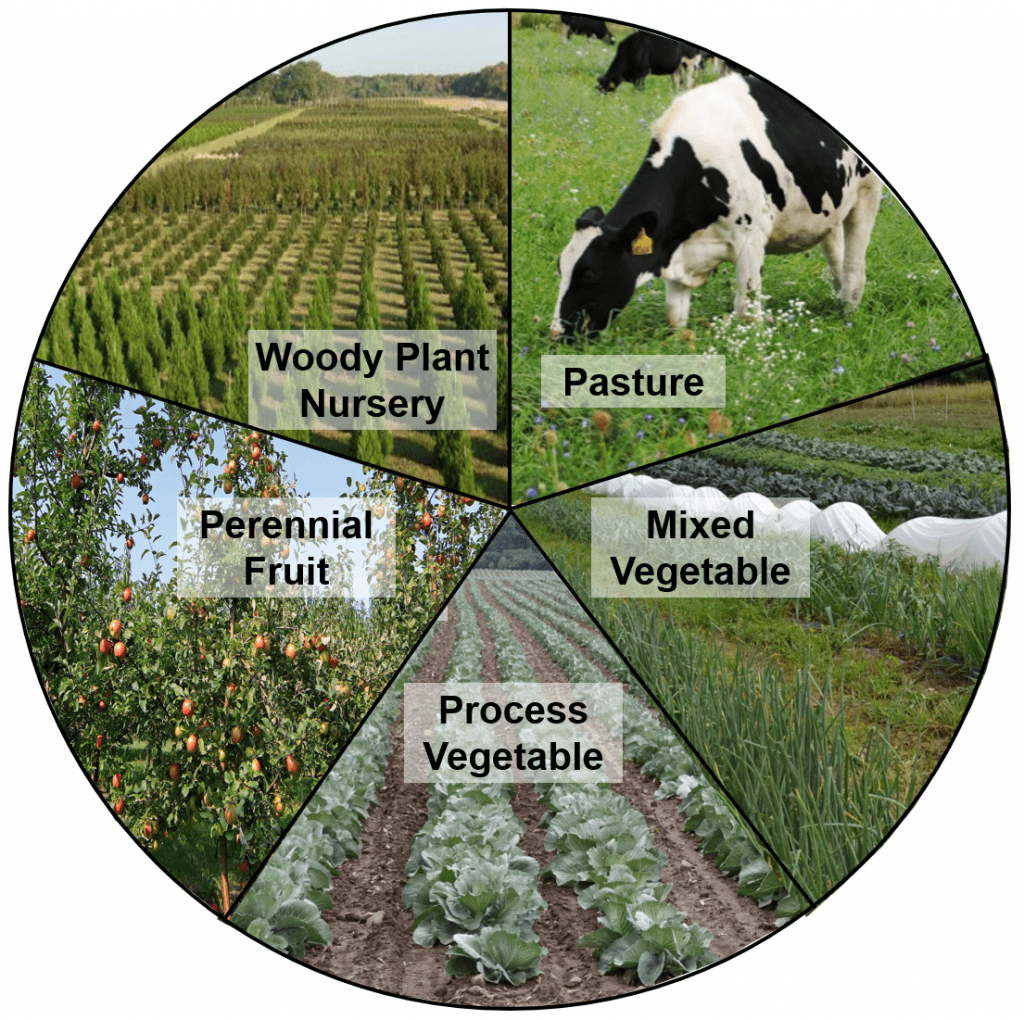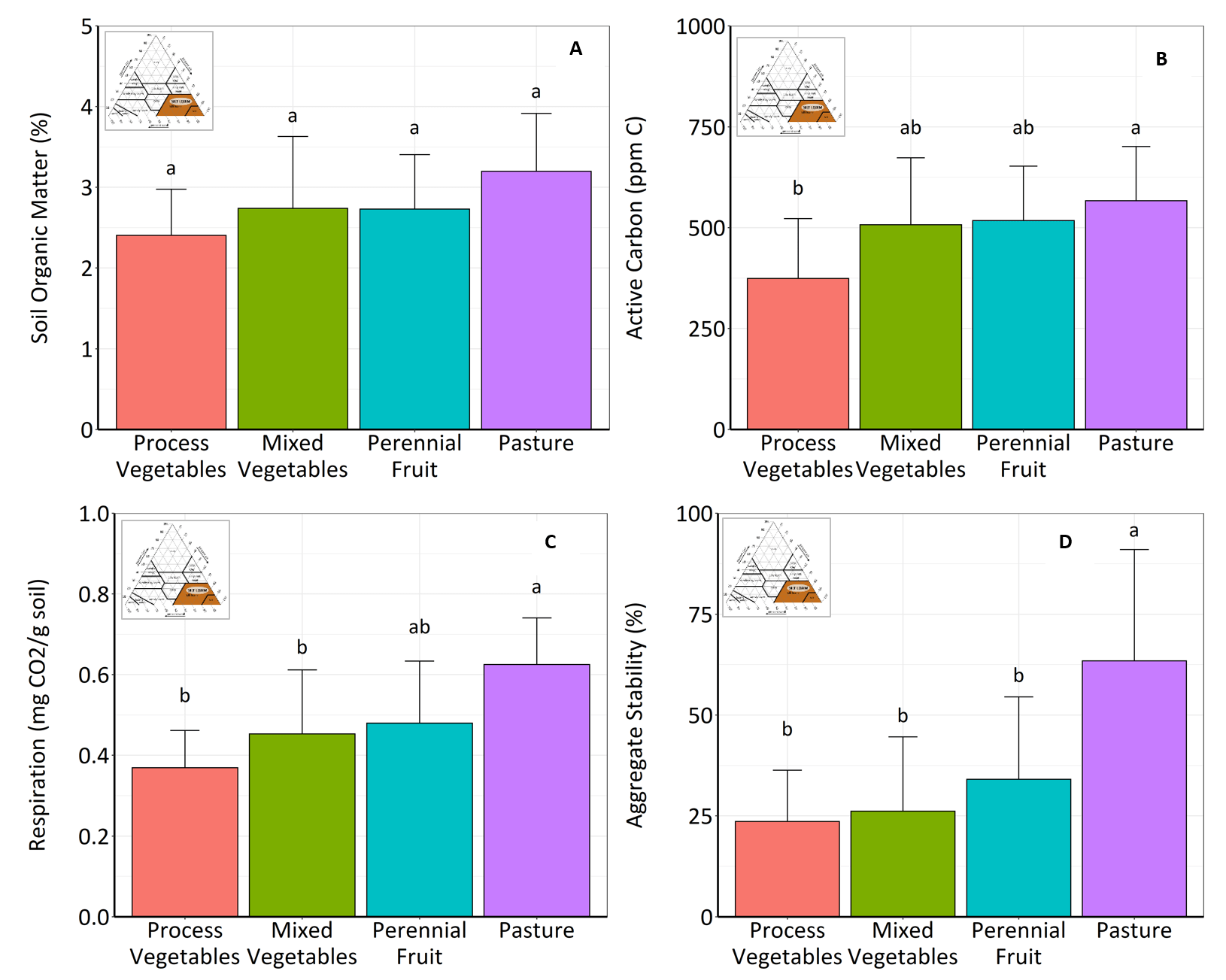Deborah Aller1, Kaitlin Shahinian2, Joseph Amsili3, Harold van Es3
1Cornell Cooperative Extension of Suffolk County, 2Suffolk County Soil and Water Conservation District, 3Soil and Crop Sciences Section, Cornell University
Interest in soil health concepts, practices, and testing has grown rapidly across the United States as farmers, researchers, and the general public increasingly recognize the central role of soils in food production, water quality, environmental sustainability, and climate adaptation and mitigation. Further, it is well known that land managers have a tremendous capacity to either degrade or improve the health of the soil through their management decisions.
Acknowledging the importance of healthy soil for the long-term productivity and sustainability of agriculture on Long Island specifically, the CCE Agricultural Stewardship Program partnered with the Suffolk County-Soil and Water Conservation District to offer soil health testing free of charge to all farmers in the County. This program began in spring 2018 and in just three years over 60 farms have participated, and more than 200 soil samples have been collected. In 2020, the New York Soil Health Initiative (https://newyorksoilhealth.org/) published a report (https://newyorksoilhealth.org/soil-health-characterization/) characterizing soil health across New York State (NYS), which quantified the effects of different cropping systems on soil health. We additionally characterized soil health at a smaller regional scale within the state so that farmers can compare their soil health to similar production environments nearby.
We have summarized results from 231 soil samples collected from across Suffolk County that encompass a variety of soil types and cropping systems. The samples were approximately evenly split among sandy loam, loam, and silt loam texture classes. The County has a higher proportion of coarse-textured soils (higher percentage of sand) than much of the rest of the state. These coarser soils are indicated by the Psamment soil suborder (Figure 1). All soil samples were analyzed using the Standard Comprehensive Assessment of Soil Health (CASH) package at the Cornell Soil Health Laboratory.

Suffolk County hosts a great diversity of agriculture and remains the top producer of nursery crops, certain vegetable crops (pumpkins and tomatoes), and perennial fruits (grapes and peaches). There are also many small-scale diversified vegetable farms that largely grow fresh market vegetables and several pastured livestock operations. Additionally, the high value of land and the maritime climate creates much different conditions for agricultural production than the rest of NYS. Five cropping system categories were constructed by grouping similar crops (Figure 2). The Processing Vegetable category grouped fields where winter squash, potatoes, pumpkins, and tomatoes were grown. The Mixed Vegetable category grouped fields where several different vegetable crops were grown in the same field in a single season and sold as fresh market produce (and also tend to be smaller farms than with processing vegetables). The Perennial Fruit category grouped all small fruit (blueberries and brambles), tree fruit orchards (apples, peaches, cherries, etc.), and vineyards. Woody Plant Nurseries included all operations producing field-grown ornamental horticulture crops (oak trees, California privet, boxwood, holly, etc.), and Pastures included the livestock operations with perennial forage crops.

The initial analysis focused on differences among cropping systems on silt loam soils, although it reinforced the concepts that soil texture and cropping system are dominant factors contributing to the overall soil health on farms (Figure 3).

For silt loams, the soil health indicators of active carbon, respiration, and aggregate stability showed differences across cropping system, whereas soil organic matter (OM) did not. This indicates that some of these more labile OM indicators (more directly related to biological activity in the soil) can better and earlier detect changes in soil health than the total soil OM level which generally changes slowly over time. Pastures had greater active carbon levels than Processing Vegetable systems. Respiration and aggregate stability were slightly more sensitive to cropping system than active carbon. Pastures had higher soil respiration than both Processing Vegetable and Mixed Vegetable systems. Furthermore, Pastures had more than twice the aggregate stability compared to all other systems, which highlights the importance of living roots year-round to build and stabilize soil aggregates (Figure 3).
Overall, different agricultural management practices associated with various cropping systems had a big impact on soil health status. They often reflect important differences in total carbon and nutrient balances and degrees of disturbance from tillage. Pasture and Perennial Fruit maintained the best overall soil health because these systems are largely undisturbed and have perennial vegetation (Figure 3). Pasture systems receive continuous root and shoot inputs year-round and some Perennial Fruit systems may receive woodchip mulch. This permanent cover further protects the soil from losses due to wind and water erosion. The Mixed Vegetable farms typically have diverse rotations, practice cover cropping, and utilize various soil amendments such as compost to supplement fertility and build OM. In contrast, Processing Vegetable systems are more intensively managed, and although they often practice cover cropping, typically don’t receive sufficient organic inputs to replace the OM that is lost annually from tillage and other management activities. Typically, 40-80% of the carbon and nutrients in the aboveground biomass are exported off the farm in the form of crop harvests, which needs be counterbalanced with soil management practices like cover cropping and organic amendment application to maintain and build soil health.
Stay tuned for the complete report that characterizes soil health across Suffolk County, which will examine the effects of soil texture, soil taxonomic unit, and cropping system on the suite of biological, physical, and chemical soil parameters included in the CASH test. Refer to the full Characterization of Soil Health in New York State (https://newyorksoilhealth.org/soil-health-characterization/) report as an example of what will be produced for Suffolk County.
References and further reading:
Amsili, J.P., H.M. van Es, R.R. Schindelbeck, K.S.M. Kurtz, D.W. Wolfe, and G. Barshad. 2020. Characterization of Soil Health in New York State: Technical Report. New York Soil Health Initiative. Cornell University, Ithaca, NY
Magdoff, F.R. and H.M. van Es. 2009. Building Soils for Better Crops: Sustainable Soil Management. Sustainable Agriculture Research and Extension, College Park, MD. (The fourth edition will be out in 2021).
Moebius-Clune, B.N., D.J. Moebius-Clune, B.K. Gugino, O.J. Idowu, R.R. Schindelbeck, A.J. Ristow, H.M. van Es, J.E. Thies, H.A. Shayler, M.B. McBride, K.S.M Kurtz, D.W. Wolfe, and G.S. Abawi, 2016. Comprehensive Assessment of Soil Health – The Cornell Framework. Ed. 3.2. Cornell University, Geneva, NY
Sustainable Agriculture Research and Education (SARE). 2007. Managing Cover Crops Profitably. 3rd Ed. Available for download at this link: https://www.sare.org/wp-content/uploads/Managing-Cover-Crops-Profitably.pdf
